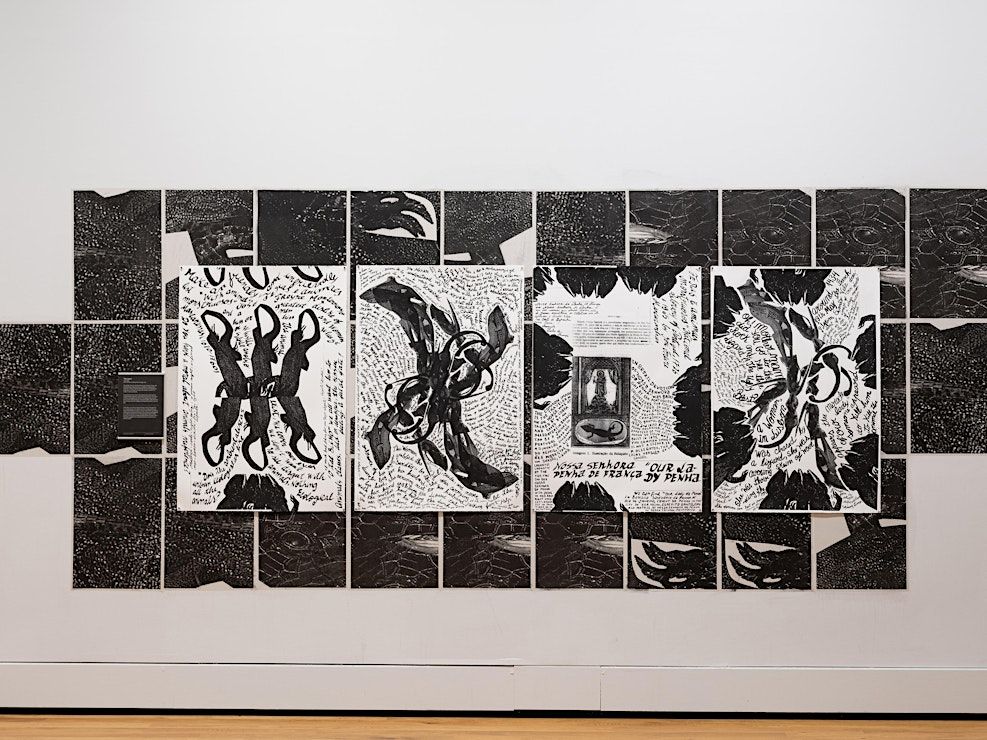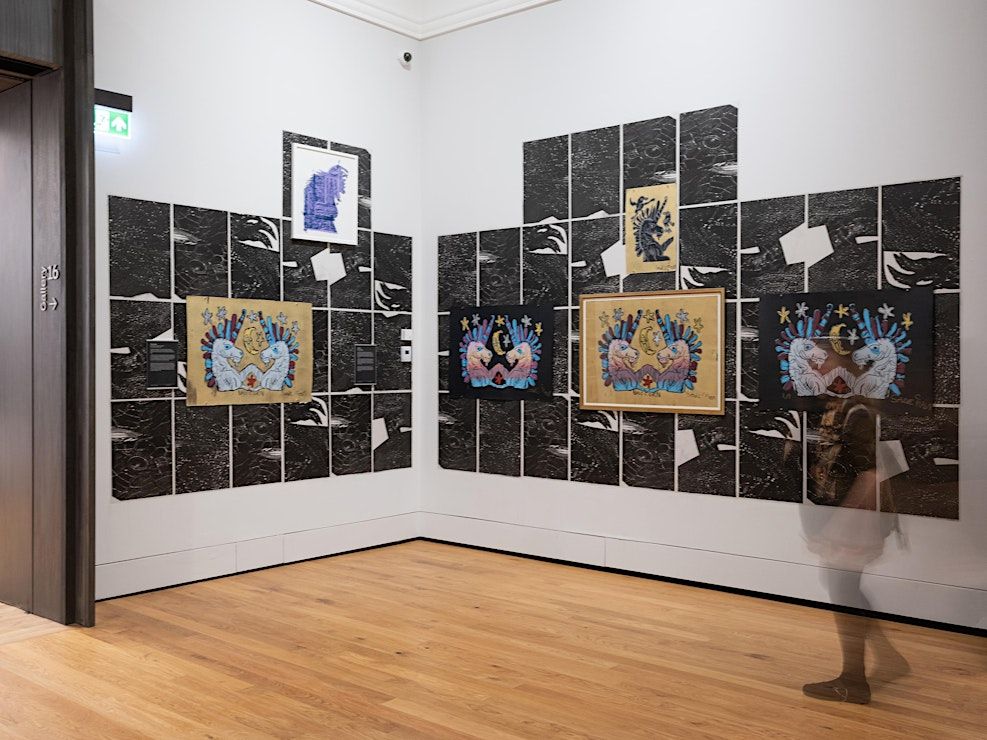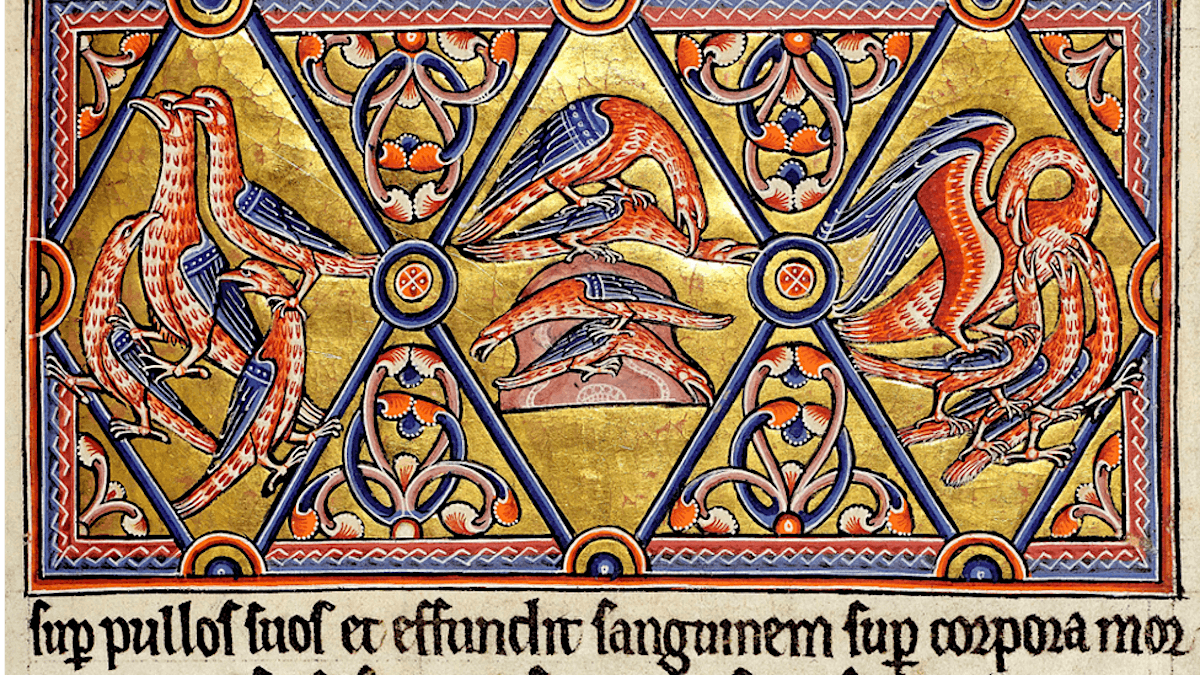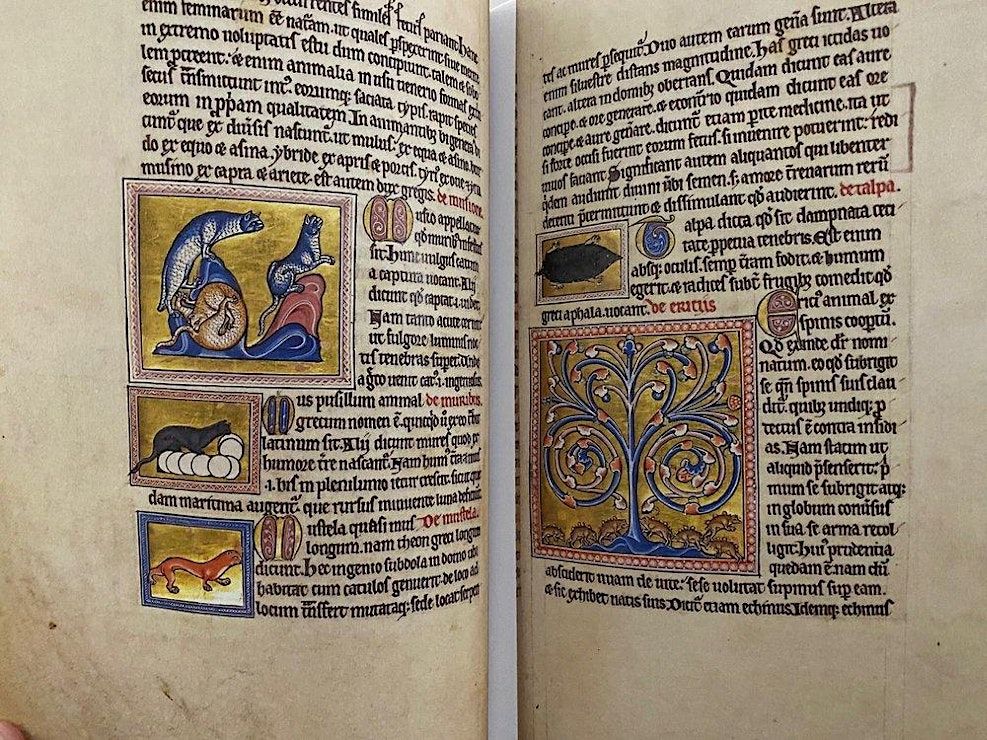
About this Event
Professor Jane Geddes, art historian and Emeritus Professor of the University of Aberdeen with a specialism in British Medieval manuscripts, is joined by Professor Tim Ingold, Emeritus Professor of Social Anthropology at the University of Aberdeen, Fellow of the British Academy and the Royal Society of Edinburgh, in conversation with Nuno Sacramento, Director and Curator of Peacock & the worm. They discuss the history of the 12th-century Aberdeen Bestiary in relation to more modern takes on the theme, including the New Aberdeen Bestiary, which is on display in Gallery 16 until 5 January.
The Cowdary Hall doors will be open from 1.30pm with the introductions due to begin at 2pm. We hope you can join us for this special event.
About Professor Jane Geddes
Jane Geddes is a British art historian and academic, specialising in Scottish architecture, British Medieval manuscripts, Pictish sculpture and Medieval decorative ironwork
Geddes graduated with a degree in history from University of Cambridge. She earned her PhD from the Courtauld Institute of Art, then a constituent College of the University of London, before working as an Inspector of Ancient Monuments for English Heritage. After this, she became lecturer then senior lecturer in the history of art at University of Aberdeen.
Geddes secured a Leverhulme Research Award to produce two volumes for the Buildings of Scotland series, Aberdeenshire and North-East Scotland, 2008 - 2014.
In 2003, Geddes published the electronic version of the St Albans Psalter, in a project funded with a major grant from the UK Arts and Humanities Research Board (now Arts and Humanities Research Council). Geddes analysed the images and text of the Psalter to argue that the book was made for the medieval anchoress and prioress Christina of Markyate.
About Professor Tim Ingold
Following 25 years at the University of Manchester, where he was appointed Max Gluckman Professor of Social Anthropology in 1995, Tim moved in 1999 to Aberdeen, where he established the UK’s newest Department of Anthropology, as well as directing the University’s strategic research theme on ‘The North’ (2011-17). Tim has carried out ethnographic fieldwork among Saami and Finnish people in Lapland, and has written on comparative questions of environment, technology and social organisation in the circumpolar North, as well as on the role of animals in human society, on issues in human ecology, and on evolutionary theory in anthropology, biology and history.
From there, he went on to explore the links between environmental perception and skilled practice, with a view to replacing traditional models of genetic and cultural transmission with a relational approach focusing on the growth of embodied skills of perception and action within social and environmental contexts of development. In his more recent research, Tim has pursued three lines of inquiry that emerged from his earlier work, concerning the dynamics of pedestrian movement, the creativity of practice, and the linearity of writing. These all came together in a project funded by the UK Economic and Social Research Council (2005-08), entitled ‘Explorations in the comparative anthropology of the line’.
Tim has subsequently taught and written on a series of issues on the interface between anthropology, archaeology, art and architecture. From 2013 to 2018 he directed the project ‘Knowing From the Inside: Anthropology, Art, Architecture and Design’ (2013-18), with funding from the European Research Council. Tim retired from the University in 2018, but continues to research and write as an independent scholar.
About the New Aberdeen Bestiary
Informed by the manuscript known as the Aberdeen Bestiary, seven international artists selected an animal, real or imagined, and explored its symbolic, social, and cultural significance. In collaboration with Peacock’s printmakers, each realised a collection of prints composing the New Aberdeen Bestiary: a three year long project that gathers new stories and new voices. The result is a multifaceted, shapeshifting collection that challenges systems of classification which impose monolithic moral and ethical values.
Prompted by the amount of marginalia in the medieval text, the notes, comments and corrections, the sketches and doodles that move away from the page into the unbound wilderness of the margins, the New Aberdeen Bestiary looks at the liminal spaces between categories, where categories shift and morph into one another; the blurry areas between animal and beast.
Special thanks to Aberdeen Art Gallery for hosting and all their help in setting up. the exhibition and events. Read more about the New Aberdeen Bestiary here.




Event Venue & Nearby Stays
Aberdeen Art Gallery, Schoolhill, Aberdeen, United Kingdom
GBP 0.00












